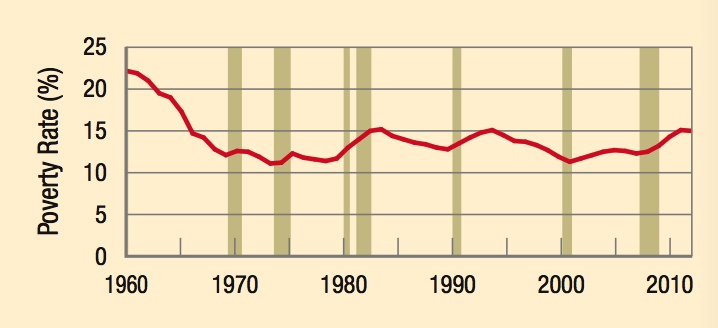Chapter Summary
Chapter Summary
Section 1: The Distribution of Income and Wealth
Income: A flow of funds by individuals or households over time.
Wealth: A stock of assets less liabilities at a given point in time.

Types of Income Distribution
Functional distribution of income: the distribution of inputs (factors) of production. Wages constitute nearly 70% of income using this approach.
Personal or family distribution of income: the percentage of income flowing to specific segments of the population. Quintiles (20% of the population) are used by the U.S. Census Bureau to measure income distribution.
Income inequality is measured either by constructing a Lorenz curve or by calculating a Gini coefficient for a specific population.

Lorenz curve: shows the cumulative income earned by each segment of the population. The farther the curve is from the 45 degree line, the more unequal the distribution of income.
Gini coefficient: is measured as the ratio between A (area of income inequity) and A + B (total area below equal distribution line). The larger the Gini coefficient, the more unequal the distribution of income.
Since the 1970s, income distribution in the United States has become more unequal. Causes include:
- Differing educational levels
- Economic discrimination
- Market power
- Increase in the number of two-earner households

Redistribution policies are designed to reduce income inequality. Three common policies are:
- Progressive taxation: higher tax rates as income increases
- In-kind transfers: unemployment benefits, welfare, Pell Grants (for college)
- Noncash benefits: Subsidized or public housing, Medicaid, food stamps
409
Section 2: Poverty
Poverty is defined differently by each country and by organizations such as the World Bank.
The poverty rate according to the U.S. Census Bureau is the percentage of persons with income below the poverty rate threshold. This includes all money income (before taxes are deducted) and cash benefits and excludes capital gains and noncash benefits.

The poverty rate in the United States dropped in the 1960s and 1970s, and has stabilized since, with minor drops during economic expansion and minor rises during recessions.

New Method of Measuring Poverty
- includes after-tax money income
- includes noncash benefits (such as food stamps and housing subsidies)
- deducts work-related expenditures (such as transportation and child care) and out-of-pocket medical expenditures

Rawls: Rawlsian theory states that a society’s well-being is only as good as its least fortunate citizen. Therefore, to reduce poverty it advocates for the least amount of income inequality.
Nozick: This theory is based on the argument that property rights (including income) must be protected to provide incentives for growth, which will reduce poverty.
The depth (or severity) of poverty can be measured using one of two approaches:
Income deficit: How far (in dollars) below the poverty threshold.
Ratio of income to poverty: Measured as the ratio of income compared to the poverty threshold.

- 0.00–0.50: severely poor (about 6% of Americans)
- 0.51–1.00: poor
- 1.01–1.25: near poor
Two Solutions to Reduce Poverty
- Expand welfare and redistribution programs, and make taxes more progressive.
- Increase incentives to promote economic growth, which benefits all people, including the poor.
410